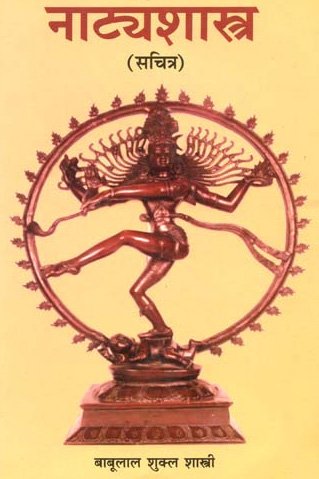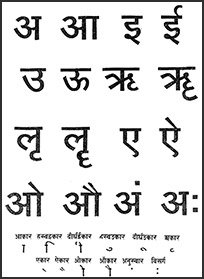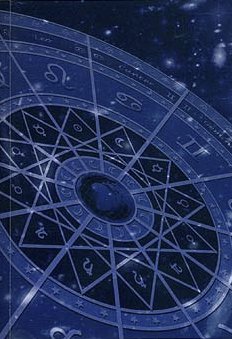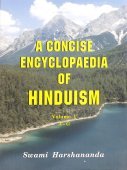Bahula, Bahulā, Bāhula: 32 definitions
Introduction:
Bahula means something in Buddhism, Pali, Hinduism, Sanskrit, Marathi, Jainism, Prakrit, Hindi, biology. If you want to know the exact meaning, history, etymology or English translation of this term then check out the descriptions on this page. Add your comment or reference to a book if you want to contribute to this summary article.
Alternative spellings of this word include Bahul.
In Hinduism
Natyashastra (theatrics and dramaturgy)
Source: Wisdom Library: Nāṭya-śāstraBahula (बहुल) is the Sanskrit name of one of Bharata’s sons, mentioned in the Nāṭyaśāstra 1.26-33. After Brahmā created the Nāṭyaveda (nāṭyaśāstra), he ordered Bharata to teach the science to his (one hundred) sons. Bharata thus learned the Nāṭyaveda from Brahmā, and then made his sons study and learn its proper application. After their study, Bharata assigned his sons (eg., Bahula) various roles suitable to them.

Natyashastra (नाट्यशास्त्र, nāṭyaśāstra) refers to both the ancient Indian tradition (shastra) of performing arts, (natya—theatrics, drama, dance, music), as well as the name of a Sanskrit work dealing with these subjects. It also teaches the rules for composing Dramatic plays (nataka), construction and performance of Theater, and Poetic works (kavya).
Purana and Itihasa (epic history)
Source: Wisdom Library: Varāha-purāṇa1) Bahulā (बहुला).—Name of a river (nadī) situated near the seven great mountains on the western side of mount Naiṣadha, according to the Varāhapurāṇa chapter 83. These settlements consume the water flowing from these seven great mountains (Viśākha, Kambala, Jayanta, Kṛṣṇa, Harita, Aśoka and Vardhamāna). Niṣadha (Naiṣadha) is one of the seven mountains located in Jambūdvīpa, ruled over by Āgnīdhra, a grandson of Svāyambhuva Manu.
2) Bahulā (बहुला) is another name for Puṇḍarīka, one of the seven major rivers situated in Krauñcadvīpa, according to the Varāhapurāṇa chapter 88. Krauñcadvīpa is one of the seven islands (dvīpa), ruled over by Jyotiṣmān, one of the ten sons of Priyavrata, son of Svāyambhuva Manu.
Svāyambhuva Manu was created by Brahmā, who was in turn created by Nārāyaṇa, the unknowable all-pervasive primordial being.
The Varāhapurāṇa is categorised as a Mahāpurāṇa, and was originally composed of 24,000 metrical verses, possibly originating from before the 10th century. It is composed of two parts and Sūta is the main narrator.
Source: archive.org: Puranic Encyclopedia1) Bahulā (बहुला).—A river. In Mahābhārata, Bhīṣma Parva, Chapter 9, Stanza 29, mention is made about this river which is famous in the Purāṇas.
2) Bahulā (बहुला).—An attendant of Subrahmaṇya. (Mahābhārata, Śalya Parva, Chapter 46, Stanza 3).
3) Bahulā (बहुला).—Wife of Vidura a Brahmin, who frequented the houses of harlots. Bahulā was in the habit of going to the temple of Gokarṇa and hear Purāṇas, after the death of her husband. By this good deed Vidura got deliverance from sin. (Skanda Purāṇa 3.3.22).
Source: Cologne Digital Sanskrit Dictionaries: The Purana Index1a) Bahula (बहुल).—A Prajāpati.*
- * Brahmāṇḍa-purāṇa III. 1. 54; Vāyu-purāṇa 65. 54.
1b) A thousand-hooded snake.*
- * Matsya-purāṇa 6. 41.
Bahula (बहुल) is a name mentioned in the Mahābhārata (cf. V.72.13) and represents one of the many proper names used for people and places. Note: The Mahābhārata (mentioning Bahula) is a Sanskrit epic poem consisting of 100,000 ślokas (metrical verses) and is over 2000 years old.
Bahulā also refers to the name of a Lady mentioned in the Mahābhārata (cf. IX.45.3).
Bahulā also refers to the name of a River mentioned in the Mahābhārata (cf. VI.10.26).

The Purana (पुराण, purāṇas) refers to Sanskrit literature preserving ancient India’s vast cultural history, including historical legends, religious ceremonies, various arts and sciences. The eighteen mahapuranas total over 400,000 shlokas (metrical couplets) and date to at least several centuries BCE.
Vyakarana (Sanskrit grammar)
Source: Wikisource: A dictionary of Sanskrit grammarBahula (बहुल).—lit. variously applicable; the word is used in the rules of Panini in connection with a grammatical rule or affix or the like that is seen necessarily applied in some cases, optionally applied in a few other cases and not at all applied in the other cases still. The word बहुलम् (bahulam) is used by Panini in all such cases. See P. II. 1.32, 57; II. 3.62; II.4.39, 73, 76, 84, III. 1.34 etc.; cf. the usual explanation of बहुलम् (bahulam) given by grammarians in the lines क्वचित्प्रवृत्तिः क्वचिदप्रवृत्तिः क्वचिद्विभाषा क्वचि-दन्यदेव । विधेर्विधानं बहुधा समीक्ष्य चतुर्विधं बाहुलकं वदन्ति (kvacitpravṛttiḥ kvacidapravṛttiḥ kvacidvibhāṣā kvaci-danyadeva | vidhervidhānaṃ bahudhā samīkṣya caturvidhaṃ bāhulakaṃ vadanti) Com. V. Pr. III.18.

Vyakarana (व्याकरण, vyākaraṇa) refers to Sanskrit grammar and represents one of the six additional sciences (vedanga) to be studied along with the Vedas. Vyakarana concerns itself with the rules of Sanskrit grammar and linguistic analysis in order to establish the correct context of words and sentences.
Kavya (poetry)
Source: archive.org: Naisadhacarita of SriharsaBahula (बहुल) refers to the “dark half of a month”, and is mentioned in the Naiṣadha-carita 4.63; 21.124.

Kavya (काव्य, kavya) refers to Sanskrit poetry, a popular ancient Indian tradition of literature. There have been many Sanskrit poets over the ages, hailing from ancient India and beyond. This topic includes mahakavya, or ‘epic poetry’ and natya, or ‘dramatic poetry’.
Ayurveda (science of life)
Nighantu (Synonyms and Characteristics of Drugs and technical terms)
Source: WorldCat: Rāj nighaṇṭuBahula (बहुल) is another name for Śvetamarica, an unidentified medicinal plant, according to verse 6.33-34 of the 13th-century Raj Nighantu or Rājanighaṇṭu. Note: Śvetamarica is prepared by decorticating the Marica fruits. Some scholars consider the Śigru seeds as Śvetamarica, which is not an accepted version now. The oil of pepper is prepared by its seeds. Malabar and Tellichari varieties are commercially much in use.—The sixth chapter (pippalyādi-varga) of this book enumerates ninety-five varieties of plants obtained from the market (paṇyauṣadhi).—Together with the names Bahula and Śvetamarica, there are a total of seven Sanskrit synonyms identified for this plant.
Unclassified Ayurveda definitions
Source: gurumukhi.ru: Ayurveda glossary of termsBahulā (बहुला):—Excessive, thick

Āyurveda (आयुर्वेद, ayurveda) is a branch of Indian science dealing with medicine, herbalism, taxology, anatomy, surgery, alchemy and related topics. Traditional practice of Āyurveda in ancient India dates back to at least the first millenium BC. Literature is commonly written in Sanskrit using various poetic metres.
Shaivism (Shaiva philosophy)
Source: SOAS University of London: Protective Rites in the Netra TantraBahula (बहुल) refers to “abundant (waves)” (of Amṛta), according to the Netratantra of Kṣemarāja: a Śaiva text from the 9th century in which Śiva (Bhairava) teaches Pārvatī topics such as metaphysics, cosmology, and soteriology.—Accordingly, [verse 3.17-23, while describing a meditation on Amṛteśa in his form as Mṛtyujit]—“And so now, having constructed the amṛtāmudrā or the padmamudrā, [the Mantrin] should meditate on the Ātman. [...] One should think of him [dressed in] white clothes and ornaments, [draped in] a radiant garland of pearls, bulbs like moonlight, etc., his body is anointed with white sandalwood and dust-colored powdered camphor. In he middle of the somamaṇḍala, [he is] bathed in thick, abundant waves of Amṛta (sphāra-bahula-ūrmi-pāripluta) [that make the] moon quiver. [...]”.

Shaiva (शैव, śaiva) or Shaivism (śaivism) represents a tradition of Hinduism worshiping Shiva as the supreme being. Closely related to Shaktism, Shaiva literature includes a range of scriptures, including Tantras, while the root of this tradition may be traced back to the ancient Vedas.
Jyotisha (astronomy and astrology)
Source: Wisdom Library: Brihat Samhita by VarahamihiraBahula (बहुल) refers to “excessive (sleepers)”, according to the Bṛhatsaṃhitā (chapter 16) (“On the planets—graha-bhaktiyoga”), an encyclopedic Sanskrit work written by Varāhamihira mainly focusing on the science of ancient Indian astronomy astronomy (Jyotiṣa).—Accordingly, “[...] Rāhu also presides over notorious sinners, fops, Rākṣasas, excessive sleepers (nidrā-bahula), all sentient beings and wicked persons; over black gram and gingelly seed. [...]”.

Jyotisha (ज्योतिष, jyotiṣa or jyotish) refers to ‘astronomy’ or “Vedic astrology” and represents the fifth of the six Vedangas (additional sciences to be studied along with the Vedas). Jyotisha concerns itself with the study and prediction of the movements of celestial bodies, in order to calculate the auspicious time for rituals and ceremonies.
In Buddhism
Tibetan Buddhism (Vajrayana or tantric Buddhism)
Source: Wisdom Library: Tibetan BuddhismBahulā (बहुला) is the name of a Piśācī mentioned as attending the teachings in the 6th century Mañjuśrīmūlakalpa: one of the largest Kriyā Tantras devoted to Mañjuśrī (the Bodhisattva of wisdom) representing an encyclopedia of knowledge primarily concerned with ritualistic elements in Buddhism. The teachings in this text originate from Mañjuśrī and were taught to and by Buddha Śākyamuni in the presence of a large audience (including Bahulā).

Tibetan Buddhism includes schools such as Nyingma, Kadampa, Kagyu and Gelug. Their primary canon of literature is divided in two broad categories: The Kangyur, which consists of Buddha’s words, and the Tengyur, which includes commentaries from various sources. Esotericism and tantra techniques (vajrayāna) are collected indepently.
Mahayana (major branch of Buddhism)
Source: archive.org: Hindu Mathematics (Mahayana)Bahula (बहुल) refers to a “hundred-sextillion” (100,000,000,000,000,000,000,000) in a list of numeral denominations, according to the Lalitavistara-sūtra, a well-known Buddhist work of the first century B.C.—Accordingly, “The mathematician Arjuna asked the Bodhisattva, ‘O young man, do you know the counting which goes beyond the koṭi on the centesimal scale? Bodhisattva: I know. Arjuna: How does the counting proceed beyond the koṭi on the centesimal scale? Bodhisattva: [hundred utsaṅgas are called bahula, hundred bahulas are called nāgabala,...]”.

Mahayana (महायान, mahāyāna) is a major branch of Buddhism focusing on the path of a Bodhisattva (spiritual aspirants/ enlightened beings). Extant literature is vast and primarely composed in the Sanskrit language. There are many sūtras of which some of the earliest are the various Prajñāpāramitā sūtras.
Biology (plants and animals)
Source: Google Books: CRC World Dictionary (Regional names)1) Bahula in India is the name of a plant defined with Amomum subulatum in various botanical sources. This page contains potential references in Ayurveda, modern medicine, and other folk traditions or local practices It has the synonym Cardamomum subulatum Kuntze (among others).
2) Bahula is also identified with Elettaria cardamomum It has the synonym Amomum racemosum Lam. (etc.).
Example references for further research on medicinal uses or toxicity (see latin names for full list):
· Botanico-Medica
· Transactions of the Horticultural Society of London (1812)
· Species Plantarum (1753)
· Bulletin of Miscellaneous Information, Royal Gardens, Kew (1930)
· Verhandelingen van het Bataviaasch Genootschap van Kunsten en Wetenschapen (1830)
· Notes from the Royal Botanic Garden Edinburgh (1972)
If you are looking for specific details regarding Bahula, for example diet and recipes, pregnancy safety, side effects, chemical composition, extract dosage, health benefits, have a look at these references.

This sections includes definitions from the five kingdoms of living things: Animals, Plants, Fungi, Protists and Monera. It will include both the official binomial nomenclature (scientific names usually in Latin) as well as regional spellings and variants.
Languages of India and abroad
Pali-English dictionary
Source: BuddhaSasana: Concise Pali-English Dictionarybahula : (adj.) abundant; frequent.
Source: Sutta: The Pali Text Society's Pali-English Dictionary1) Bahula, (nt.) (=preceding) N. of a lucky die J. VI, 281. (Page 485)
2) Bahula, (adj.) (usually —°, as °- only in cpd. °ājīva) much, abundant, nt. abundance (°-); full of, rich in, fig. given to, intent on, devoted to D. II, 73; S. I, 199, 202; A. III, 86 (pariyatti°), 432 (āloka°); IV, 35; It. 27, 30; J. IV, 5 (vināsa°), 22; PvA. 80 (chārik’ aṅgāra°).—sayana° as much as “particular in one’s choice of resting place” Miln. 365 nt. bahulaṃ (-°) in the fullness of, full of S. III, 40 (nibbidā°). The compn form with karoti (& kamma) is bahulī° (q. v.). Cp. bāhulla.—ājīva living in abundance (opp. Lūkh’ājīvin) D. III, 44, 47. (Page 485)

Pali is the language of the Tipiṭaka, which is the sacred canon of Theravāda Buddhism and contains much of the Buddha’s speech. Closeley related to Sanskrit, both languages are used interchangeably between religions.
Marathi-English dictionary
Source: DDSA: The Molesworth Marathi and English Dictionarybahula (बहुल).—m S The dark half of a month.
--- OR ---
bahula (बहुल).—a (Poetry.) Many or much.
--- OR ---
bāhulā (बाहुला).—m A representation (of a man or other male) made of cloth, wood, earth, stone &c.; a figure or image, a doll, puppet, statue. 2 unc The arm &c. See bāhuṭā. 3 (See bāhēlā) Cow-rope &c.
--- OR ---
bāhuḷā (बाहुळा).—m R (Commonly bāvhaḷā) The region of the shoulder-joint.
Source: DDSA: The Aryabhusan school dictionary, Marathi-Englishbahula (बहुल).—m The dark half of a month.
--- OR ---
bahula (बहुल).—a Many or much.
--- OR ---
bāhulā (बाहुला).—m n A doll, puppet. A figure, image, statue.
Marathi is an Indo-European language having over 70 million native speakers people in (predominantly) Maharashtra India. Marathi, like many other Indo-Aryan languages, evolved from early forms of Prakrit, which itself is a subset of Sanskrit, one of the most ancient languages of the world.
Sanskrit dictionary
Source: DDSA: The practical Sanskrit-English dictionaryBahula (बहुल).—a. (compar. baṃhīyas superl. baṃhiṣṭha)
1) Thick, dense, compact; वृक्षांश्च बहुलच्छायान् ददृशुर्गिरिमूर्धनि (vṛkṣāṃśca bahulacchāyān dadṛśurgirimūrdhani) Mahābhārata (Bombay) 3. 143.3.
2) (a) Broad, wide, capacious; (b) ample, large.
3) Abundant, copious, plentiful, much, numerous; अविनयबहुलतया (avinayabahulatayā) K.143.
4) Numerous, manifold, many; तरुणतमालनीलबहुलोन्नमदम्बुधराः (taruṇatamālanīlabahulonnamadambudharāḥ) Mālatīmādhava (Bombay) 9.18.
5) Full of, rich or abounding in; जन्मनि क्लेशबहुले किं नु दुःखमतः परम् (janmani kleśabahule kiṃ nu duḥkhamataḥ param) H.1.184; क्रियाविशेषबहुलां भोगैश्वर्यगतिं प्रति (kriyāviśeṣabahulāṃ bhogaiśvaryagatiṃ prati) Bhagavadgītā (Bombay) 2.43.
6) Accompanied or attended by.
7) Born under the Pleiades; P.IV.3.33.
8) Dark, black.
9) Comprehensive, variously applicable.
-laḥ 1 The dark half of a month (kṛṣṇapakṣa); प्रादुरास बहुलक्षपाछबिः (prādurāsa bahulakṣapāchabiḥ) R.11.15; करेण भानोर्बहुलावसाने संधुक्ष्यमाणेव शशाङ्करेखा (kareṇa bhānorbahulāvasāne saṃdhukṣyamāṇeva śaśāṅkarekhā) Kumārasambhava 7.8;4.13.
2) An epithet of fire.
-lā 1 A cow; कस्मात् समाने बहुलाप्रदाने सद्भिः प्रशस्तं कपिलाप्रदानम् (kasmāt samāne bahulāpradāne sadbhiḥ praśastaṃ kapilāpradānam) Mahābhārata (Bombay) 13.77.9.
2) Cardamoms.
3) The indigo plant.
4) The Pleiades (pl.)
-lam 1 The sky.
2) White-pepper.
-lam ind. Often, frequently; बहुलं छन्दसि (bahulaṃ chandasi).
--- OR ---
Bāhula (बाहुल).—a. Manifold.
-laḥ Fire; शीतरुजं समये च परस्मिन् बाहुलतो रसिका शमयन्ती (śītarujaṃ samaye ca parasmin bāhulato rasikā śamayantī) Rām. Ch.4.99.
2) The month Kārtika.
-lam 1 Manifoldness.
2) An armour for the arms, vantbrass.
-lī The day of full moon in the month of Kārtika.
Source: Cologne Digital Sanskrit Dictionaries: Edgerton Buddhist Hybrid Sanskrit DictionaryBahula (बहुल).—nt., a high number, = 100 utsaṅga (Mahāvyutpatti ucchaṅga): Lalitavistara 148.2, cited Mahāvyutpatti 7962 = Tibetan maṅ ḥdzin, much hold.
Source: Cologne Digital Sanskrit Dictionaries: Shabda-Sagara Sanskrit-English DictionaryBahula (बहुल).—mfn.
(-laḥ-lā-laṃ) 1. Much, many, 2. Black. 3. Variously applicable, comprehensive, (a rule, &c.) m.
(-laḥ) 1. Agni or fire. 2. The dark half of a month. n.
(-laṃ) The sky. f. plu.
(-lāḥ). The Pleiades. f.
(-lā) 1. Indigo. 2. Cardamoms. 3. A cow. E. bahu many, lā to get, aff. ka .
--- OR ---
Bāhula (बाहुल).—m.
(-laḥ) 1. Fire or its deity. 2. The month Kartika. n.
(-laṃ) 1. Mail worn on the arm. 2. A term in grammar, implying various or irregular formation, or construction or such as is analogous to this word. E. bahula fire, and aṇ aff.; also with kan added, bāhulaka .
Source: Cologne Digital Sanskrit Dictionaries: Benfey Sanskrit-English DictionaryBahula (बहुल).—[bahu + la], I. adj., f. lā, comparat. baṃhīyaṃs, superl. baṃhiṣṭha. 1. Manifold. 2. Much, [Bhartṛhari, (ed. Bohlen.)] 2, 29; numerous, [Pañcatantra] ii. [distich] 8; abundant, [Uttara Rāmacarita, 2. ed. Calc., 1862.] 24, 13; exceeding, ib. 69, 2 (thus to be read). 3. Abounding in, [Mānavadharmaśāstra] 4, 60; [Hitopadeśa] i. [distich] 183, M.M.;
--- OR ---
Bāhula (बाहुल).—I. i. e. bahula + a, m. 1. Fire. 2. The month Kārttika. Ii. i. e. bāhu + la, n. Mail worn on the arms.
Source: Cologne Digital Sanskrit Dictionaries: Cappeller Sanskrit-English DictionaryBahula (बहुल).—[adjective] thick, dense, wide, large, numerous, many, much, abounding in (—°); [neuter] [adverb] often. Abstr. tā† [feminine], tva† [neuter]
Source: Cologne Digital Sanskrit Dictionaries: Monier-Williams Sanskrit-English Dictionary1) Bahula (बहुल):—[from bah] mf(ā)n. thick, dense, broad, wide, spacious, ample, large, [Ṛg-veda] etc. etc.
2) [v.s. ...] abundant, numerous, many, much, [ib.] (am ind. often, frequently, [Nirukta, by Yāska; Prātiśākhya; Pāṇini])
3) [v.s. ...] accompanied by, attended with, [Chāndogya-upaniṣad; Manu-smṛti; Mahābhārata] etc.
4) [v.s. ...] (in gram.) variously applicable, comprehensive (as a rule)
5) [v.s. ...] born under the Pleiades, [Pāṇini 4-3, 33]
6) [v.s. ...] black, [cf. Lexicographers, esp. such as amarasiṃha, halāyudha, hemacandra, etc.]
7) [v.s. ...] m. (or n. ?) the dark half of a month, [Mahābhārata; Kāvya literature] etc.
8) [v.s. ...] m. Agni or fire, [cf. Lexicographers, esp. such as amarasiṃha, halāyudha, hemacandra, etc.]
9) [v.s. ...] Name of a Prajāpati, [Viṣṇu-purāṇa]
10) [v.s. ...] of a king of the Tāla-jaṅghas, [Mahābhārata]
11) [v.s. ...] m. [plural] Name of a people, [Mārkaṇḍeya-purāṇa]
12) Bahulā (बहुला):—[from bahula > bah] f. a cow, [cf. Lexicographers, esp. such as amarasiṃha, halāyudha, hemacandra, etc.]
13) [v.s. ...] cardamoms, [Bhāvaprakāśa]
14) [v.s. ...] the indigo plant, [cf. Lexicographers, esp. such as amarasiṃha, halāyudha, hemacandra, etc.]
15) [v.s. ...] Name of the twelfth Kalā of the moon, [Catalogue(s)]
16) [v.s. ...] of a goddess, [Purāṇa]
17) [v.s. ...] of one of the Mātṛs attending on Skanda, [Mahābhārata]
18) [v.s. ...] of the wife of Uttama who was son of Uttāna-pāda, [Mārkaṇḍeya-purāṇa]
19) [v.s. ...] of the mother of a Samudra, [Hemacandra’s Pariśiṣṭaparvan]
20) [v.s. ...] of a mythical cow, [Colebrooke]
21) [v.s. ...] of a river, [Mahābhārata]
22) [v.s. ...] f. [plural]= kṛttikās, the Pleiades, [Varāha-mihira; cf. Lexicographers, esp. such as amarasiṃha, halāyudha, hemacandra, etc.]
23) Bahula (बहुल):—[from bah] n. the sky, [cf. Lexicographers, esp. such as amarasiṃha, halāyudha, hemacandra, etc.]
24) [v.s. ...] factitious black salt, [cf. Lexicographers, esp. such as amarasiṃha, halāyudha, hemacandra, etc.]
25) [v.s. ...] white pepper, [cf. Lexicographers, esp. such as amarasiṃha, halāyudha, hemacandra, etc.]
26) [v.s. ...] a [particular] high number, [Buddhist literature]
27) Bāhula (बाहुल):—[from bāhu] 1. bāhula n. (for 2. See below) armour for the arms, [cf. Lexicographers, esp. such as amarasiṃha, halāyudha, hemacandra, etc.]
28) [v.s. ...] Name of a place in Dakṣiṇā-patha, [Catalogue(s)]
29) [from bāhu] 2. bāhula mfn. ([from] bahula for 1. See above) manifold [gana] saṃkalādi
30) [v.s. ...] m. the month Kārttika (when the moon is near the Pleiades; See bahulā), [cf. Lexicographers, esp. such as amarasiṃha, halāyudha, hemacandra, etc.]
31) [v.s. ...] fire, [cf. Lexicographers, esp. such as amarasiṃha, halāyudha, hemacandra, etc.]
32) [v.s. ...] a Jina, [Demetrius Galanos’s Lexiko: sanskritikes, anglikes, hellenikes]
33) [v.s. ...] Name of a prince, [Viṣṇu-purāṇa]
34) [v.s. ...] n. manifoldness [gana] pṛthv-ādi
Source: Cologne Digital Sanskrit Dictionaries: Yates Sanskrit-English Dictionary1) Bahula (बहुल):—[(laḥ-lā-laṃ) a.] Much, many; black; variously applicable (a rule). m. Agni or fire; dark half of the month. f. Indigo; cardamoms; a cow. n. Sky. pl. Pliades.
2) Bāhula (बाहुल):—(laḥ) 1. m. Fire or its deity; the month Kārtik. n. Mail worn on the arm. a. Various.
Source: DDSA: Paia-sadda-mahannavo; a comprehensive Prakrit Hindi dictionary (S)Bahula (बहुल) in the Sanskrit language is related to the Prakrit words: Bahula, Bahulā.
[Sanskrit to German]
Sanskrit, also spelled संस्कृतम् (saṃskṛtam), is an ancient language of India commonly seen as the grandmother of the Indo-European language family (even English!). Closely allied with Prakrit and Pali, Sanskrit is more exhaustive in both grammar and terms and has the most extensive collection of literature in the world, greatly surpassing its sister-languages Greek and Latin.
Hindi dictionary
Source: DDSA: A practical Hindi-English dictionaryBahula (बहुल) [Also spelled bahul]:—(a) plentiful, plenteous, abundant; plural; frequent; ~[ka] polymer; ~[katā] polymerism; ~[tā] plenty, abundance; plurality; ~([tā])[vāda] pluralism; plurality; hence ~([tā])[vādī] (a, nm).
...
Prakrit-English dictionary
Source: DDSA: Paia-sadda-mahannavo; a comprehensive Prakrit Hindi dictionary1) Bahula (बहुल) in the Prakrit language is related to the Sanskrit word: Bahula.
2) Bahula (बहुल) also relates to the Sanskrit word: Bahula.
3) Bahulā (बहुला) also relates to the Sanskrit word: Bahulā.
Prakrit is an ancient language closely associated with both Pali and Sanskrit. Jain literature is often composed in this language or sub-dialects, such as the Agamas and their commentaries which are written in Ardhamagadhi and Maharashtri Prakrit. The earliest extant texts can be dated to as early as the 4th century BCE although core portions might be older.
Kannada-English dictionary
Source: Alar: Kannada-English corpusBahula (ಬಹುಲ):—[adjective] = ಬಹುಳ [bahula]1.
--- OR ---
Bahula (ಬಹುಲ):—[noun] = ಬಹುಳ [bahula]2.
--- OR ---
Bahuḷa (ಬಹುಳ):—
1) [adjective] many; much; abundant; numerous; ample; large.
2) [adjective] thick; dense.
3) [adjective] fat; corpulent.
4) [adjective] of black colour; black.
--- OR ---
Bahuḷa (ಬಹುಳ):—
1) [noun] the second half of a lunar month from the day next to the full moonday to the next new moonday.
2) [noun] a fat, corpulant man.
3) [noun] Křttike, the third of the twenty seven stars with which the moon movement is associated in each lunar month.
4) [noun] the quality or condition of having plenty; plentifulness; abundance.
--- OR ---
Bāhula (ಬಾಹುಲ):—
1) [adjective] many; much; abundant; numerous; ample; large.
2) [adjective] thick; dense.
3) [adjective] fat; corpulent.
4) [adjective] of black colour; black.
--- OR ---
Bāhula (ಬಾಹುಲ):—
1) [noun] = ಬಾಹುರಕ್ಕೆ - [bahurakke -] 1.
2) [noun] the condition or quality of being abundant; plentifulness; abundance.
3) [noun] Kārtīka, the eighth month in Hindu lunar calendar.
4) [noun] fire.
Kannada is a Dravidian language (as opposed to the Indo-European language family) mainly spoken in the southwestern region of India.
Nepali dictionary
Source: unoes: Nepali-English Dictionary1) Bahula (बहुल):—adj. abundant; ample; more than necessary;
2) Bahulā (बहुला):—adj. mad; insane; crazy; lunatic;
3) Bāhulā (बाहुला):—n. pl. of बाहुलो [bāhulo]
Nepali is the primary language of the Nepalese people counting almost 20 million native speakers. The country of Nepal is situated in the Himalaya mountain range to the north of India.
See also (Relevant definitions)
Starts with (+29): Bahula Kamma, Bahula Sutta, Bahula-darta, Bahulaapan, Bahulabhimana, Bahulacchada, Bahulada, Bahulaga, Bahulagandha, Bahulagrahana, Bahulagriva, Bahulaka, Bahulakesha, Bahulakhyana, Bahulalapa, Bahulam, Bahulanta, Bahulapa, Bahulapada, Bahulapaksha.
Ends with (+7): Abhimanabahula, Alokabahula, Asangabahula, Atibahula, Dahanabahula, Drishtibahula, Duhkhabahula, Gandhabahula, Kaddamabahula, Kandabahula, Kubahula, Madhubahula, Nidrabahula, Pahasambahula, Pariyattibahula, Pasadabahula, Patrebahula, Samasabahula, Sambahula, Spharabahula.
Full-text (+130): Bahuleya, Duhkhabahula, Bahulam, Bamhishtha, Bahuli, Bahulya, Sambahula, Bahulagriva, Bahulika, Bahala, Bahulagandha, Madhubahula, Bahulalapa, Bamhiyas, Gandhabahula, Pakulam, Bavalebhorapi, Bahulaka, Baholi, Bavali.
Relevant text
Search found 56 books and stories containing Bahula, Bahulā, Bāhulā, Bāhuḷā, Bāhula, Bahuḷa; (plurals include: Bahulas, Bahulās, Bāhulās, Bāhuḷās, Bāhulas, Bahuḷas). You can also click to the full overview containing English textual excerpts. Below are direct links for the most relevant articles:
Shrimad Bhagavad-gita (by Narayana Gosvami)
Verse 2.43 < [Chapter 2 - Sāṅkhya-yoga (Yoga through distinguishing the Soul from the Body)]
Verse 18.24 < [Chapter 18 - Mokṣa-yoga (the Yoga of Liberation)]
Rig Veda (translation and commentary) (by H. H. Wilson)
Garga Samhita (English) (by Danavir Goswami)
Verse 1.12.38 < [Chapter 12 - Description of Śrī Nanda’s Festival]
Verse 4.19.41 < [Chapter 19 - A Thousand Names of Srī Yamunā]
Verses 2.10.18-22 < [Chapter 10 - Description of Śrī Kṛṣṇa’s Herding the Cows]
List of Mahabharata people and places (by Laxman Burdak)
Bhakti-rasamrta-sindhu (by Śrīla Rūpa Gosvāmī)
Verse 3.2.120 < [Part 2 - Affection and Service (dāsya-rasa)]
Vakyapadiya of Bhartrihari (by K. A. Subramania Iyer)
Verse 3.14.58 < [Book 3 - Pada-kāṇḍa (14): Vṛtti-samuddeśa (On Ccomplex Formation)]
Verse 3.14.56-57 < [Book 3 - Pada-kāṇḍa (14): Vṛtti-samuddeśa (On Ccomplex Formation)]
Verse 3.14.79 < [Book 3 - Pada-kāṇḍa (14): Vṛtti-samuddeśa (On Ccomplex Formation)]
Related products
